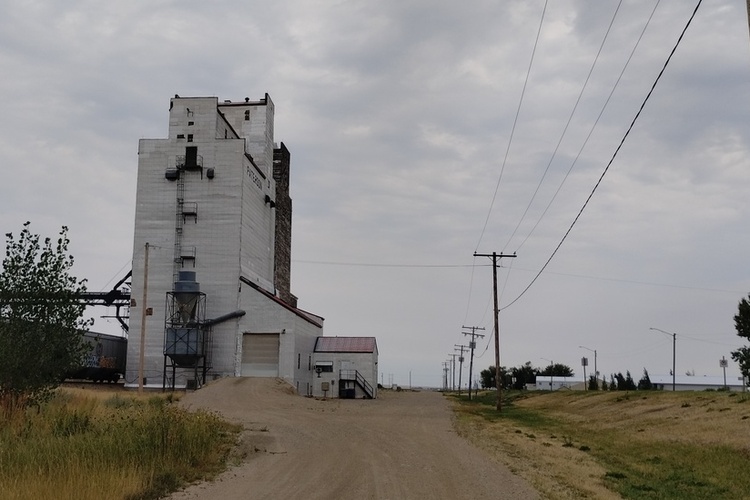Oct 23, 2023 By Isaac Farrell, Student Researcher As I noted in my last blog post, grain elevators are an important symbol of the Prairies and of Saskatchewan in particular, which was once home to over 3,300 elevators. Most communities in the province had more than one elevator at some point, and the number of elevators a town had could spark friendly competition with neighbouring communities, with several notable communities boasting as many as twelve at their peak. From a physical standpoint, their unparalleled height meant that, along with the occasional church steeple, elevators dominated and defined prairie skylines in a way no other building could, which both drew the attention of local artists and served as a navigational aid for pilots and highway travellers alike. In these ways, elevators were Saskatchewan's first skyscrapers. Over time, they have become its sentinels. Various changes to the prairie economy caused wooden grain elevators to decline in economic relevance, and today there are roughly 400 elevators still standing. The decline of the wooden grain elevator in Saskatchewan is closely linked to the decline of rural life in general; for many formerly vibrant agricultural towns across the province, the loss of the last grain elevator served as the death knell for the community, even if they did not realize it at the time. Thus, when we talk or think about grain elevators, it is usually (and understandably) through a nostalgic lens, as if they are already entirely a thing of the past. News stories, academic articles, and even my last blog post primarily focus on their decline, and elevator pictures posted on social media tend to depict long-abandoned grain elevators through monochrome and sepia filters that make them out as forgotten relics of a bygone age. Throughout the many conversations and experiences I had regarding grain elevators this summer, people tended to be pessimistic about their future, repeatedly estimating that there are less than a hundred elevators left and that most of those still standing are far beyond repair. However, after personally visiting over 130 communities with grain elevators and seeing over 160 elevators in total over the summer, I can confidently say this is often not the case. While it is undeniably true that the number of elevators has decreased (and continues to decrease) significantly and that many are in poor condition, I was simply amazed by how many are either still in use or are being actively maintained. For example, on my last major trip, I visited 56 unique elevators; of these, I estimate that 29 were in working condition, 11 have likely been in working condition recently, 10 are clearly in an abandoned state, and 2 are being demolished. Some of these elevators were saved as part of community efforts despite not being used for well over a decade, as is the case with the former Pioneer in Stoughton. A select few have been transformed into museums, including those in Hepburn, North Battleford, and Val Marie. However, far more are privately owned and operated for use as grain storage, breweries, or seed cleaning operations. Innovations such as installing broadcasting equipment on elevator roofs in place of radio or cell towers have allowed them to be repurposed, and several companies have invested heavily in elevators through extensive modifications to keep them economically sustainable going forward. Clearly, wooden grain elevators still can and do have economic value in the right circumstances. While more research needs to be performed on this viability before we can make any definitive conclusions, this raises several important questions. Does economic viability challenge existing narratives of elevators or change how we view them as symbols of the past? If an elevator is altered significantly from its original purpose or design, does its symbolic value change with it? What can we do as a province to encourage the adaptive reuse of these aged but impressive structures? And does all of this say anything about how focusing on the past plays into how we build our provincial identity? I believe the answers to these questions can help us better define just what that provincial identity is, and better understand how grain elevators have and continue to contribute to our collective heritage.The Continuing Economic Relevance of Saskatchewan's Grain Elevators

